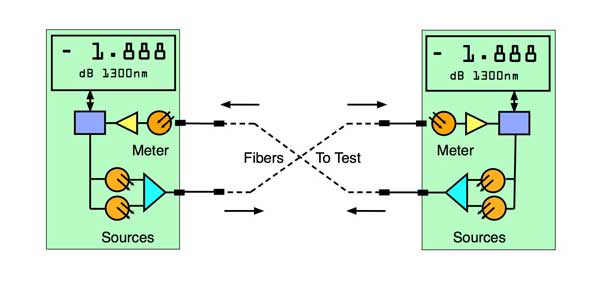Industry Standards Met by Optical Fibre Diameter Analyser Systems
Industry Standards Met by Optical Fibre Diameter Analyser Systems
Blog Article
Maximize Your Fiber Optic Efficiency: Understanding Optical Fibre Size Analyser Technology
The performance of fibre optic systems is seriously affected by the accuracy of their size, an element usually overlooked in the search of optimal signal honesty. Understanding the modern technology behind optical fibre size analysers exposes the elaborate balance in between measurement precision and manufacturing high quality. These devices not only boost conformity with market criteria however also offer real-time insights that can preemptively resolve potential problems. Nevertheless, the effects of their use expand past mere measurement; they can fundamentally alter the landscape of fiber optic performance. What factors should one think about to harness their complete capacity?
Significance of Optical Fiber Size
The size of optical fiber plays a critical function in identifying the efficiency and performance of interaction systems. It affects a number of essential specifications, consisting of the setting of light propagation, depletion, and data transfer ability. Larger diameters usually permit multiple light settings, helping with greater data transmission prices. Alternatively, smaller sized sizes often tend to support less settings, which can boost signal clearness and lower crosstalk.

Moreover, comprehending the diameter's effects can cause set you back financial savings by lowering the need for signal amplification and repeaters in considerable networks (optical fibre diameter analyser). Finally, the relevance of optical fibre size can not be overstated, as it directly influences the general effectiveness and reliability of modern interaction systems

How Size Impacts Signal Quality
Signal high quality in optical fibre systems hinges significantly on the size of the fibre. A smaller sized diameter can lead to higher depletion rates, resulting in signal loss as light trips via the fiber.
Conversely, bigger sizes usually permit for enhanced light capture and lowered modal dispersion, enhancing signal clearness. In multimode fibers, a larger core size can sustain several light modes, however it might additionally introduce intermodal dispersion, which can break down signal top quality. Selecting the optimal fibre diameter is important for achieving the wanted performance in certain applications.
Moreover, the communication between the fibre size and the wavelength of the light made use of plays a vital role in determining the efficient transmission distance and total signal honesty. Thus, understanding how fibre size influences signal quality is vital for network designers and engineers aiming to enhance optical fibre systems for trustworthy, high-speed information transmission.
Introduction of Diameter Analyser Innovation
In lots of optical fibre production procedures, exact dimension of fibre size is crucial for making certain regular performance and quality (optical fibre diameter analyser). Size analysers are advanced instruments created to assess the physical dimensions of optical fibers with high accuracy. They employ sophisticated optical and laser modern technologies to measure the diameter, ovality, and concentricity of the fiber, hence offering important information for quality assurance
These analysers can operate in-line during the production process or as part of off-line testing methods. In-line systems make it possible for real-time monitoring, enabling producers to readjust parameters promptly, therefore maintaining optimal production conditions. Off-line analysers, on the various other hand, supply detailed examinations of sets, ensuring that any deviations from specified tolerances are determined and attended to.
Size analysers dramatically add to the decrease of defects in optical fibres, enhancing total product reliability. By consistently measuring vital specifications, these innovations assist in conformity with market requirements and specs. As the demand for high-performance optical fibres remains to increase, the duty of size analysers comes to be significantly vital in achieving the desired quality and efficiency criteria in fiber optic systems.
Secret Functions of Fibre Size Analysers
Although numerous models of fibre diameter analysers exist, they generally share numerous crucial functions that improve their performance and reliability. Among one of the most considerable functions is high-resolution measurement capacities, which make certain exact diameter readings, critical for keeping quality assurance in fibre manufacturing. In addition, lots of analysers incorporate advanced optical sensing units designed to spot minute variations in fiber size, therefore providing very useful information for process optimization.
An additional crucial feature is real-time surveillance, enabling operators to obtain prompt comments on fibre size throughout the manufacturing procedure (optical fibre diameter analyser). This capability promotes fast adjustments and minimizes the possibility of issues. Lots of analysers also come furnished with user-friendly user interfaces, enabling drivers to easily browse through data and setups outputs
In addition, robust information storage space and analysis capabilities are vital for tracking historical performance patterns and making sure compliance with market criteria. Some models also supply connectivity alternatives for integration into existing production control systems, enhancing general functional efficiency. Portable and small layouts permit for flexible implementation within manufacturing settings, guaranteeing that high quality guarantee processes are smooth and efficient. These attributes collectively contribute to the effectiveness of fibre diameter analysers in optimizing fiber optic performance.
Best Practices for Fibre Optimization

First, regular calibration of optical fibre size analysers is important. This makes sure exact dimensions and description minimizes potential inconsistencies that could affect performance. Next, preserving a tidy functioning setting is vital; dust and impurities can lead to indicate deterioration.
Furthermore, it is essential to pick fibers that fulfill details application requirements. This includes assessing aspects such as attenuation, data transfer, and environmental conditions. Appropriate setup methods ought to likewise be followed, including avoiding sharp bends and excessive stress, which can endanger fiber stability.
Moreover, using sophisticated surveillance systems can facilitate real-time performance assessments, enabling punctual recognition of problems. Routine testing and upkeep need to be carried out to make certain that fibers stay within optimal functional criteria.
Finally, training workers on the newest fiber optimization modern technologies and methods will enhance try this site their capacity to carry out efficient strategies. By adhering to these best techniques, organizations can substantially enhance the performance and lifespan of their optical fiber systems, making sure efficient communication and information transfer.
Final Thought
In final thought, the integration of optical fiber diameter analyser modern technology is vital for optimizing fibre optic efficiency. By guaranteeing precise measurements of fiber measurements, these analysers significantly boost signal quality and reduce losses throughout information transmission. Routine calibration and maintenance of the analysers are crucial to support ideal performance and conformity with industry standards. Eventually, the application of this technology assists in boosted data transmission prices and reinforces signal stability, adding to the overall effectiveness of fiber optic systems.
Signal high quality in optical fibre systems pivots dramatically on the diameter of the fibre.In lots of my company optical fiber production processes, precise dimension of fiber diameter is crucial for ensuring consistent performance and quality. As the need for high-performance optical fibres continues to increase, the function of size analysers comes to be significantly vital in achieving the desired quality and performance requirements in fiber optic systems.
These attributes jointly contribute to the efficiency of fiber size analysers in maximizing fiber optic efficiency.
In verdict, the assimilation of optical fiber size analyser modern technology is critical for optimizing fiber optic efficiency.
Report this page